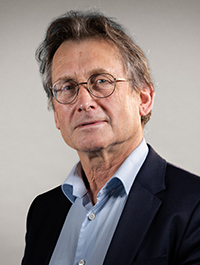 Bernard Lucas Feringa
Bernard Lucas Feringa
Jacobus van't Hoff Distinguished Professor of Molecular Sciences
Member of the Netherlands Academy of Sciences
Member of the European Academy of Sciences
Member (Foreign associate) of the National Academy of Sciences of the USA
Member (Foreign associate) of the American Academy of Arts and Sciences
Member (Foreign associate) of the Chinese Academy of Sciences
Laureate of 2016 Nobel Prize in Chemistry
Bernard Lucas Feringa is a Dutch chemist and laureate of Nobel Prize in Chemistry in 2016. He was born in 1951 in the Netherlands. He obtained his PhD degree at the University of Groningen in the Netherlands in 1978. After working as a research scientist at Shell in the Netherlands and at the Shell Biosciences Centre in the UK, he was appointed lecturer and in 1988 full professor at the University of Groningen and named the Jacobus H. van't Hoff Distinguished Professor of Molecular Sciences in 2004. He was elected as foreign honorary member of the American Academy of Arts and Sciences in 2004, member of the Royal Netherlands Academy of Sciences in 2006, member of the Netherlands Academy of Sciences in 2010, member of the National Academy of Sciences of the USA in 2019. Feringa's research has been recognized with a number of awards including the Chirality medal (2009), Humboldt Award (2012), the Marie Curie medal (2013) and the Solvay Chemistry for the Future Award (2015). He is the 2016 Nobel Laureate in Chemistry, together with Sir J. Fraser Stoddart and Jean-Pierre Sauvage, for the design and synthesis of molecular machines.
The research field of Bernard Lucas Feringa includes molecular machines and organic asymmetric catalysis. He created the first artificial molecular motor, and realized the precise control of molecular rotary motion by molecular engineering, which has inspired a family of fully synthetic motor-based smart materials. His research brings the molecular sciences into the era of steam engine. He made a nanocar that can precisely move on gold surfaces, proving the machine concept of macroscopic world at nanoscale, which is a milestone in chemistry. He also brought the concept of photoswitches into the field of molecular information storage, liquid crystal materials, chirality control and biological systems, pushing the multidisciplinary development. He is also a pioneering chemist in organic asymmetric catalysis. The Feringa ligand he developed has been extensively used by many labs.





 loading......
loading......